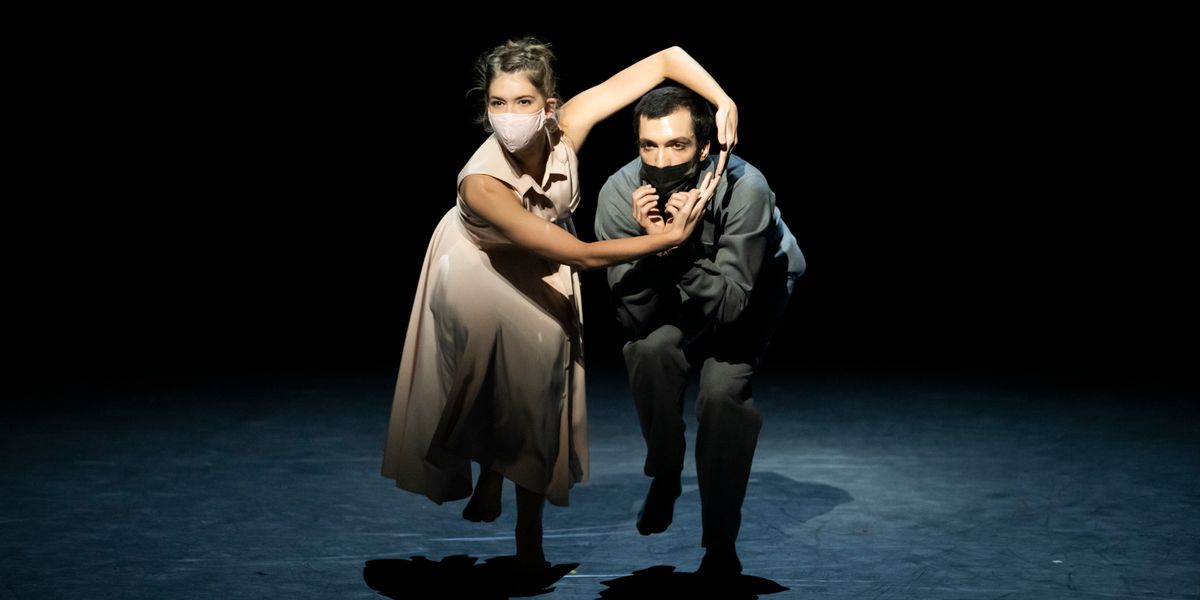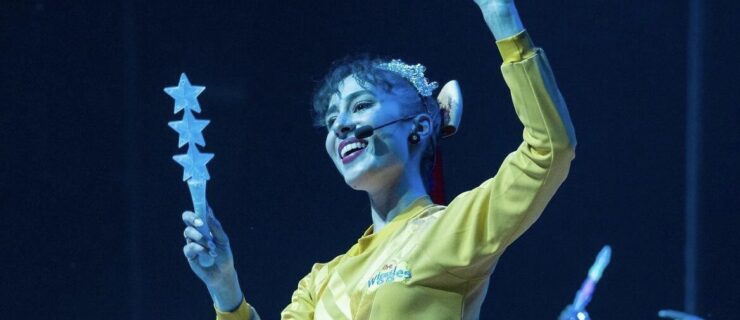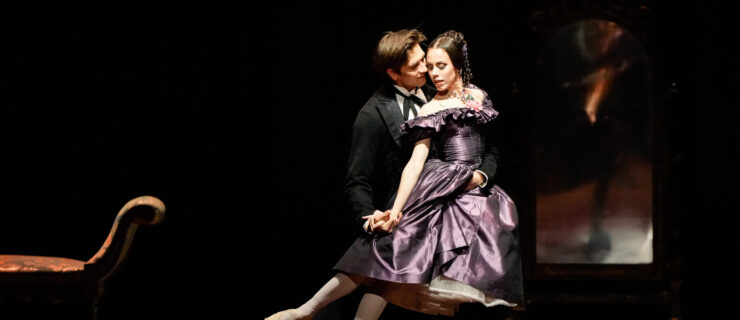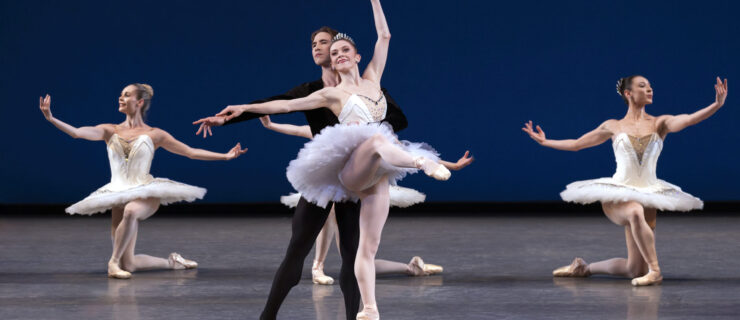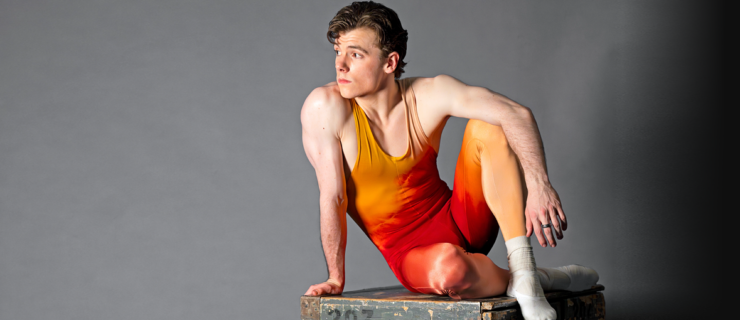Tess Voelker Is Only 23, but She’s About to Premiere Her First Work for the Paris Opéra Ballet
Not many 23-year-olds get commissioned by the Paris Opéra Ballet. For Tess Voelker, who grew up between Chicago and New Jersey before moving to Europe to start her dance career, 2020 has turned into an unexpectedly charmed year: In addition to getting a contract as a dancer with Nederlands Dans Theater, she created a pas de deux, Clouds Inside, for POB corps members Marion Gautier de Charnacé and Antonin Monié, as part of a contemporary-choreographers’ evening.
While a second national lockdown in France means the November performances have been canceled, Clouds Inside will still get an audience. On November 13, the Paris Opéra Ballet will stream a closed performance of Voelker’s work, along with creations by Sidi Larbi Cherkaoui and Mehdi Kerkouche, on Facebook Live at 8 pm Paris time for €4,49. (Tickets are not available in the U.S.)
Pointe
recently spoke with Voelker to learn more about how she landed this remarkable opportunity.
How did this collaboration with POB come about?
It all started with the social media world during quarantine. I rented a yoga studio down the street and I kept publishing lots of improv videos on Instagram. And one day, a dancer said he’d found my account thanks to Aurélie Dupont [Paris Opera Ballet’s artistic director]. I sent her a message to say it was an honor. She asked me if I ever choreographed, and I said no.
Then a few months later, I get a call from her. Due to coronavirus reasons, they were having a smaller show and she thought to use this time to reach out to more risky artists. I certainly am a risk, and I’m a cheap risk, too [laughs].
Is it really your first choreographic work?
Yes and no. I made a piece my senior year of high school for students, and NDT offers a choreographic workshop every year, so I took part in 2018. But, of course, that’s an interesting question because I improv a lot—that’s my true passion. Originally improv and choreography were opposite in my eyes, but the more I study it, the more I understand the relationship between composition and improvisation. It wasn’t until this past year that I started to know, at some point, I really want to be a choreographer.
Did you grow up wanting to join a ballet company?
My heart was always for NDT. I did competition dance before training at The Rock School, and when I went there, I was always the contemporary one, the one that didn’t really fit in. And at the competition school, I was the ballet one. But when one of my good friends in high school showed me Jiří Kylián’s Petite Mort, I felt like it was my two worlds colliding.
You spent a season with Ballet Dortmund and three years with NDT 2 before being offered a contract with the main company this year. How has that felt?
There isn’t that competitiveness that is inevitable in NDT 2, because everyone wants to prove themselves. They work you all the time; you don’t have time for a social life. It’s great—it’s just very intense. It’s almost like they’re trying to prepare you for NDT 1, because there is so much trust there. Everyone is their own artist and person.

Gautier de Charnacé and Monié in Voelker’s Clouds Inside
Julien Benhamou, Courtesy POB
Why did rehearsals for
Clouds Inside take place in The Hague?
Since it’s my first year with NDT 1, the company didn’t want me to miss out. However, they did see the opportunity for what it was, so we came to an agreement that Aurélie would send two of her dancers over here for two weeks. I worked for NDT during the day, and then I went to a separate studio space to choreograph in the evenings.
How did you feel with the Paris Opéra’s dancers in the studio?
It’s been so fun. The psychological process of choreographing is fascinating to me. I started by improv-ing with them, just seeing how they like to move, and I was blown away: They’re beautiful dancers. Then once I tried to put my movement on them, it was hard for me to find that common ground. As the process went on, we got to know each other on a more personal level. That opens conversations, which then opens a certain way of interpreting movement. It left me curious to see what more can come if even more time is dedicated to the process.
You’re working with two versions of the same song: Nick Drake’s original “Cello Song,” from 1969, and a 2009 rendition by The Books and José González.
I thought that was poetically in tune with what any choreographer is doing: We’re making our own work of art within an existing work of art, the music. The whole meaning of the piece is inspired by Nick Drake’s lyrics. He speaks to himself almost as a naive boy, who is initially playful but gets caught up in his own thoughts. We can be our worst enemy, put that stress and that sadness on ourselves.
I found Marion [Gautier de Charnacé] was the character going through that process. She starts with this childlike naivety, and towards the middle, she gets fuzzy in her mind, lost. All the while, Antonin [Monié] keeps that tempo that is always there. So he can represent, in my eyes, the idea of trust or a parent figure or friend figure—that thing that if you let go, you can always latch on to, and you’ll be okay.
Has the process made you look differently on the creations that you’ve been a part of as a performer?
As a dancer, you inevitably have this realization that although you are your own artist, you still are a tool for the choreographer, and, of course, you want to be their favorite tool. There’s this need to be liked. And as a choreographer, it’s not about whether you like something or not—it’s about the piece. With the man’s character, I felt bad at one point because I felt like the material I was giving him wasn’t enough for him to really love. But I realized that was what the piece needed, and it has nothing to do with the dancers’ ability.
